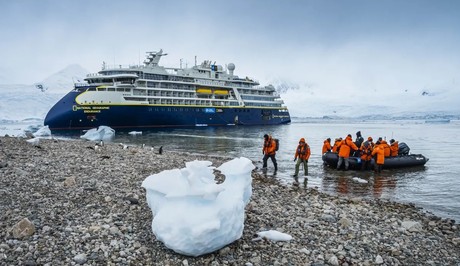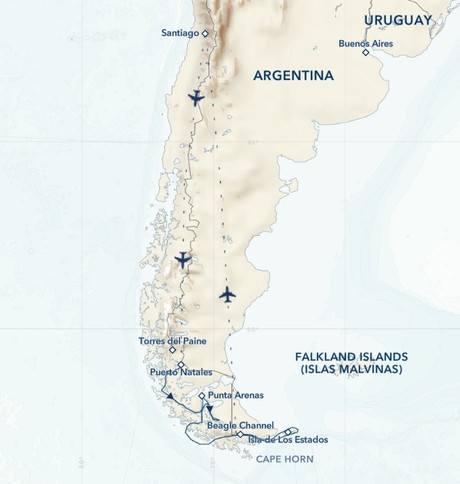Patagonia: Chilean Fjords and Argentina's Staten Island
Discover the fjords, glaciers, and panoramic vistas that make Chilean Patagonia one of the most lauded nature destinations on Earth. Venture by Zodiac and kayak to explore Chile’s deeply indented coastline. Glide into fjords and inlets beneath walls of blue ice, hike on shore with naturalists, and watch for elephant seals, Magellanic penguins, and Andean condors. Explore the seldom-seen natural splendors of Karukinka Natural Park and Isla de los Estados (Staten Island) where we have special access to nature reserves filled with stunning landscapes.
Highlights
• Venture through wildlife reserves not easily accessible to the public, including Karukinka Natural Park in Tierra del Fuego
• Kayak and Zodiac cruise the breathtaking Chilean fjords that are only accessible by expedition ship
• See massive glaciers, dramatic fjords, and soaring snow-covered peaks and spot Magellanic penguins, Andean condors, Austral parakeets, foxes, sea lions, elephant seals, and more
• Transit the legendary Beagle Channel and take in the view of Cape Horn
• By special permission, be one of the few people ever to explore Isla de los Estados (Staten Island), located at the extreme end of South America
Arrive in Santiago and transfer from the airport to the Ritz-Carlton, Santiago (or similar) before our guided overview of this vibrant city backed by the inspiring Andes. Discover sites like the Plaza de Armas and get a feel for the mix of old and new that makes this city so great. In the early evening, we gather for an informal welcome reception and a drink at the hotel.
Arrival Time: Arrive before 11:00 a.m. local time.
Arrival City: Santiago, Chile
Today we fly from Santiago to Punta Arenas, Chile's southern gateway to Patagonia. From there, we will drive to the outpost of Puerto Natales, and embark our ship. Be on deck to look for wildlife as our Captain guides us through the Kirke or White Narrows—always a challenge to navigate because of the powerful currents that flow through its pinch points.
Meals Included: Breakfast, Lunch, Dinner
Today and during the following days our guests are treated to the spectacular features of an active glaciated landscape with hanging valleys and tributary glaciers. This region was navigated by Ferdinand Magellan’s expedition and it took most of November 1520 for his ships to find a way through the channels that lie between the continental mainland and Tierra del Fuego to the south. We look to make a first stop in the extensive maze of channels and islands of the Chilean fjords, where we may go out by Zodiac and kayak.
Meals Included: Breakfast, Lunch, Dinner
Tierra del Fuego is one of Patagonia’s crown jewels. We visit its newest and largest protected area: Karukinka Natural Park. Established in 2004 through a gift from Goldman Sachs, Karukinka is one of the largest donations ever made for conservation. We are thrilled to have special permission from the Wildlife Conservation Society to visit this private reserve, which spans 1,160 square miles and harbors the endangered culpeo fox, Andean condors, albatrosses, grebes, petrels, fulmars, shearwaters, and many other kinds of wildlife. We may explore Jackson Bay, backed by a skyline of rugged mountains, and look for wildlife including black-browed albatrosses, which nest on one of the nearby small islands. We may walk a trail to a lovely waterfall and look for elephant seals resting on not only the beach but also high in the grass meadows and even in the small river draining the valley inland.
Meals Included: Breakfast, Lunch, Dinner
We experience more stunning wilderness as we explore the fjords and glaciers of the region by Zodiac, kayak, and on foot. We take Zodiacs out to explore these protected waters and rugged shores, keeping watch for the shearwaters, petrels, albatrosses, and many other birds that inhabit this otherworldly realm.
Sail the Beagle Channel and look to hike and kayak one of the wild areas in this region of beech forests, mountains, and rivers. This southernmost corner of the South American continent is also home to Cape Horn, the island at the convergence of the Atlantic and Pacific oceans, famously difficult waters that, throughout the centuries, has been the graveyard of many ships from the time before the Panama Canal.
Meals Included: Breakfast, Lunch, Dinner
We have been given special permission to visit extraordinary Staten Island, and our ship is one of the only expedition ships ever allowed here. It is a place of superlatives, barely touched in recent decades and visited primarily by a few scientists and the staff of the tiny naval observatory. The island was named by Dutch explorers in 1615. Its mountainous, forested landscapes and rugged fjords are beautiful, and there is much to discover here. Our exact schedule remains flexible to take best advantage of conditions. We search for southern rockhopper and Magellanic penguins, other waterbirds, fur seals, and sea lions. We also look for otters on our landings ashore, and we see the replica of the 1884 San Juan de Salvamento “lighthouse at the end of the world,” which inspired Jules Verne’s novel by the same name. There are chances to walk in the southern beech forests. These days are bound to stand out as a unique chance to explore a very remote place.
Meals Included: Breakfast, Lunch, Dinner
Departure Time: Depart after 9:00 p.m. local time.
Departure City: Buenos Aires, Argentina, or Santiago, Chile
Meals Included: Breakfast
Itineraries are subject to change
|
Book now |
More Cabin Categories & Prices Available
Category 1. From
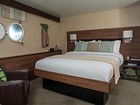
|
Book now |
More Cabin Categories & Prices Available
Category 1. From

|
Book now |
More Cabin Categories & Prices Available
Category 1

|
Book now |
More Cabin Categories & Prices Available
Category 1. From

|
Book now |
More Cabin Categories & Prices Available
Category 1. From

Vessel Type: Expedition Ship
Passenger Capacity: 126
Length: 124 m
Built: 2020
National Geographic Endurance is a state-of-the-art expedition vessel purpose-built for year-round polar navigation. Named in honour of Sir Ernest Shackleton’s legendary Endurance expedition, she is the first polar ship in Lindblad’s history designed from the keel up for exploration. With an ice-class rating of PC5 (Category A) and a fully stabilised hull, she grants access to remote and often uncharted corners of the Arctic and Antarctica in exceptional comfort and safety.
Her revolutionary X-Bow®—a striking forward-leaning design—enables superior wave-cutting performance, ensuring a smoother, quieter ride and minimising spray on deck for better wildlife observation. On board, guests enjoy thoughtfully designed public spaces including a wraparound observation lounge, library, and an expedition base for gear and briefings. Dining is offered across three flexible venues, all serving sustainable, locally inspired cuisine. With a full suite of tools for exploration and a design deeply rooted in expedition heritage, Endurance is the ultimate platform for discovering Earth’s most remote regions.


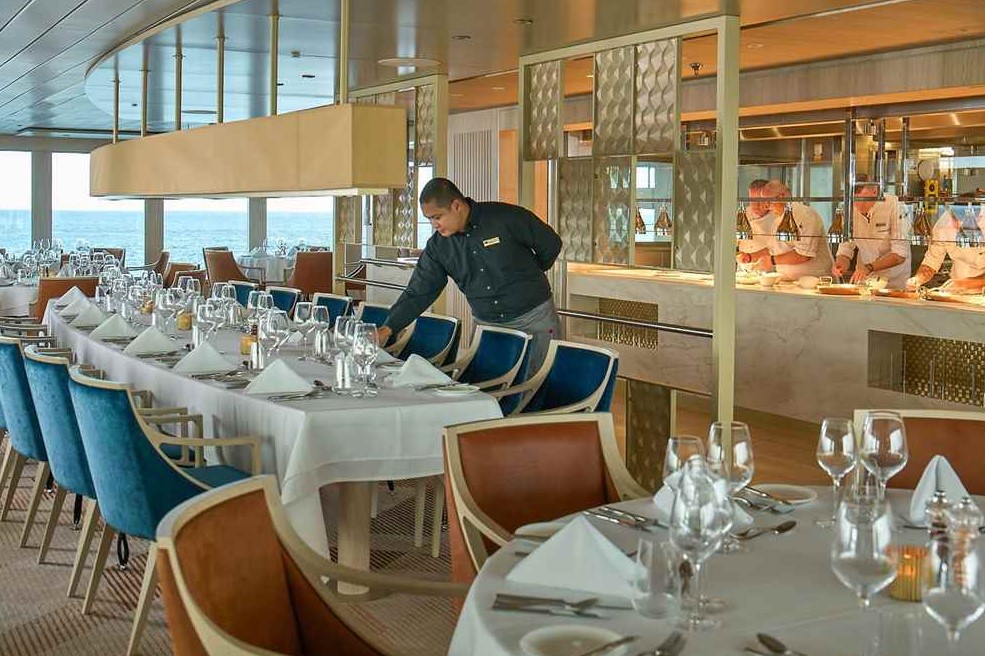






Vessel Type: Luxury Expedition
Length: 108 meters
Passenger Capacity: 148 (single & twin cabins)
Built / Refurbished: 1982 / 2008
Originally constructed for Norway’s renowned Hurtigruten Coastal Express, National Geographic Explorer was a natural fit for the Lindblad Expeditions fleet thanks to her exceptional manoeuvrability, ice-strengthened hull, and purpose-built expedition design. Now fully stabilised and refitted with over five decades of exploration expertise, she is ideally suited for navigating the most remote corners of the globe—from the rugged coasts of Europe to the icy passages of the polar regions. With vast windows throughout and a Scandinavian-inspired interior, the ship invites guests to stay connected with their environment at every turn.
Aboard National Geographic Explorer, every feature is tailored to enhance discovery. From the open Bridge and observation deck to the Chart Room and mudroom for expedition gear, the ship is an authentic platform for adventure. Her recently updated suites offer comfort and understated elegance, while public spaces such as the library, Global Gallery, and multiple dining areas encourage camaraderie and relaxation. Carrying expert guides, state-of-the-art tools, and a fleet of Zodiacs and kayaks, this 148-guest ship brings guests closer to nature with all the style and substance expected of a flagship expedition vessel.



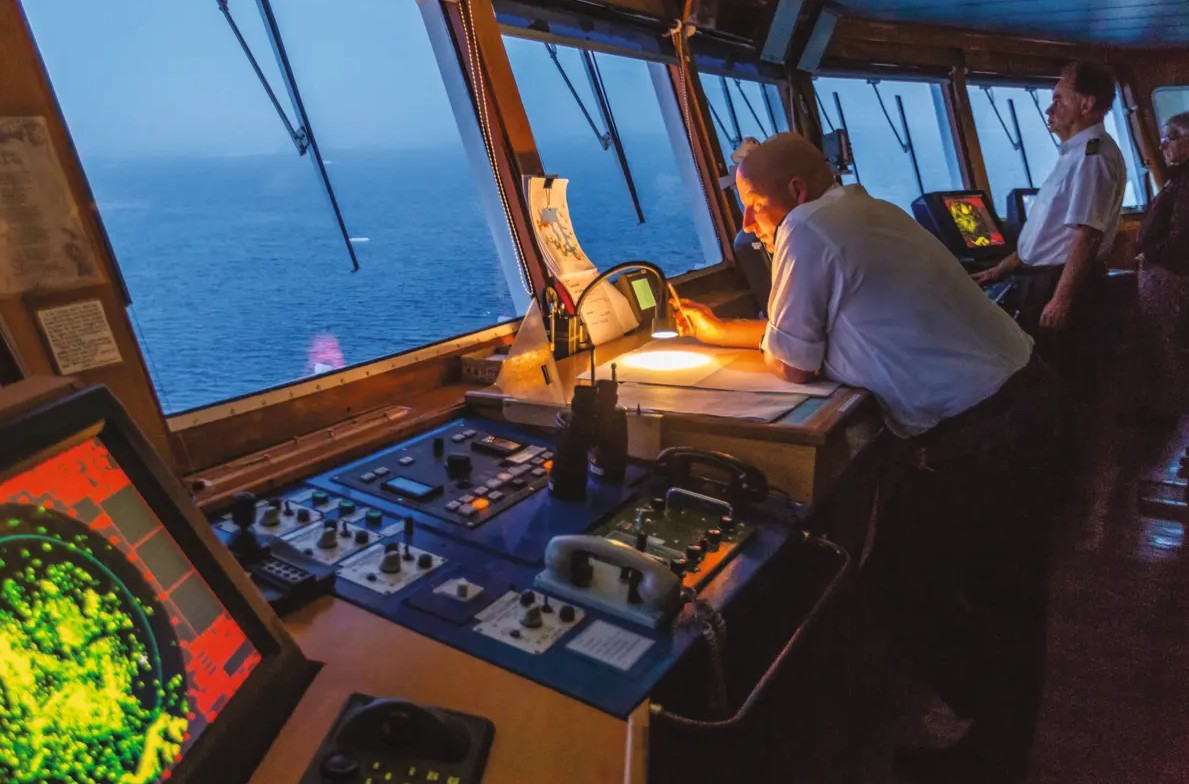




Vessel Type: Luxury Expedition
Length: 103 metres
Passenger Capacity: 102 (in 53 cabins)
Built: 2003 / Refurbished 2014
With just 53 cabins, National Geographic Orion offers an intimate and refined platform for exploring some of the world’s most remote and culturally rich regions—from the Pacific Islands and Asia to Antarctica and the Mediterranean. Purpose-built for expedition travel, she boasts an ice-class hull for navigating polar waters and exceptional manoeuvrability that enables access to secluded bays, narrow inlets and winding rivers—places far beyond the reach of larger cruise ships.
Life aboard Orion is designed to immerse guests in the natural world, with panoramic deck spaces, a whirlpool hot tub, and ample opportunities for wildlife viewing. Her public areas include two relaxed dining venues, a lounge with bar, an observation library, fitness centre and spa, as well as the OM System Photo Gear Locker to support photography at all levels. Open-Bridge access allows guests to connect with the ship’s officers and learn about navigation first-hand. Whether sailing through polar pack ice or anchoring off a tropical atoll, Orion delivers a seamless blend of adventure and comfort.




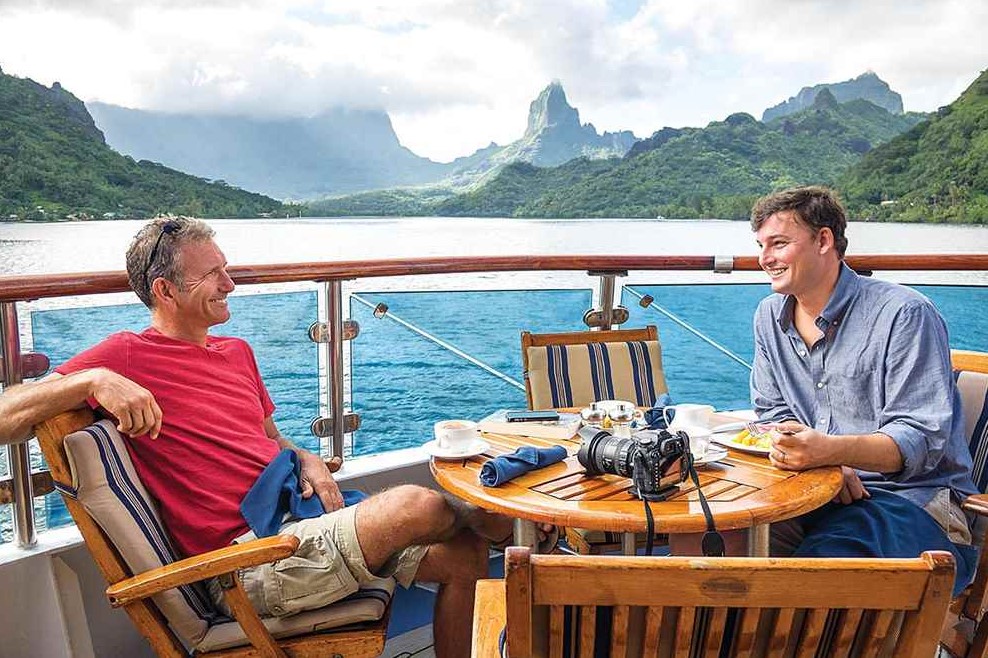



Inclusions
• All accommodations, meals, and non-alcoholic beverages aboard ships
• Use of snorkeling equipment, wet suits, and kayaks (where available)
• Services of our expert expedition team and guest speakers
• Services of a ship physician on most voyages
• Certain hotels and meals ashore as indicated in the itinerary
• Round-trip transfers based on group flights
• Shore excursions, sightseeing, entrance fees, and special access permits
• Taxes, service charges, and tips (except for ship’s crew, at our guests’ discretion)
Exclusions
• Air transportation (except when we indicated in the itinerary, as included) Extensions
• Passport, visa, and immigration fees
• Travel Protection Plan
• Special and unique excursions such as scuba diving, flightseeing, etc. (where offered)
• Alcoholic beverages (alcohol is included on select ships)
• Items of personal nature
• Phone and Internet Service
• Laundry
• Gratuity for ship’s crew, at our guests’ discretion (crew tips are included on select ships)
Our Associates Include













